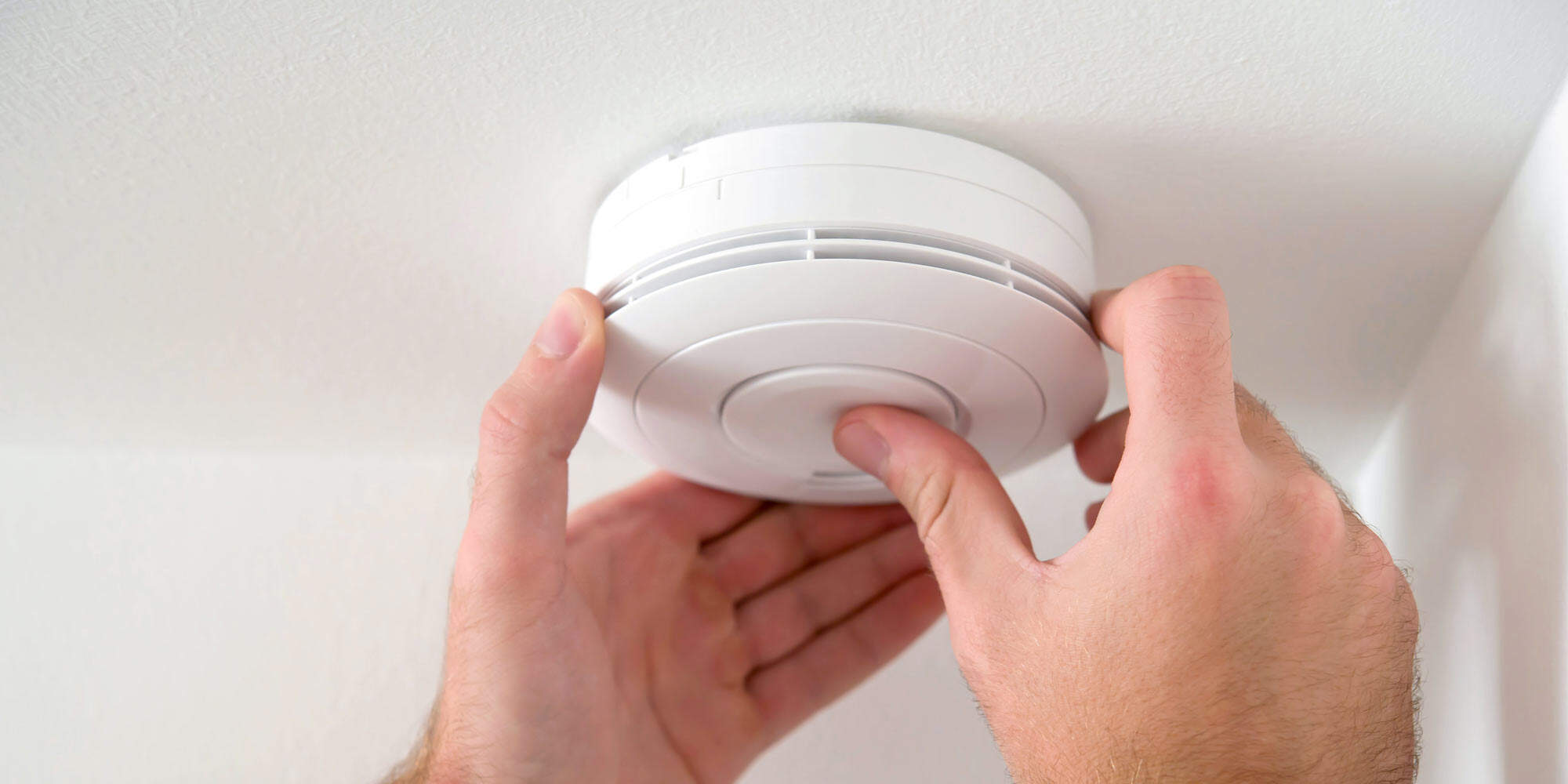In the hustle and bustle of daily life, it’s easy to overlook the silent protectors in our homes – smoke detectors and carbon monoxide detectors. These unassuming devices play a crucial role in ensuring the safety of our loved ones and our property. In this comprehensive guide, we will explore the importance of smoke detectors and carbon monoxide detectors, how they work, the recommended maintenance routines, the strategic placements within your home, and the reasons why qualified electricians should handle their installation.
Understanding the threats
The dangers of smoke:
Smoke is often the first indication of a fire. It contains harmful substances that can cause respiratory problems and, in extreme cases, lead to death. The speed at which fires can escalate emphasizes the need for early detection, giving occupants valuable time to evacuate and emergency responders the chance to intervene.
The silent killer: carbon monoxide:
Carbon monoxide (CO) is a colorless, odorless gas produced by the incomplete combustion of fuels such as wood, gas, and oil. It’s often referred to as the “silent killer” because its presence is difficult to detect without specialized equipment. Exposure to elevated levels of carbon monoxide can result in severe health issues and, in some cases, fatalities.
How smoke detectors work
Ionization smoke detectors:
Ionization smoke detectors operate by using a small amount of radioactive material to ionize air within a chamber. When smoke enters the chamber, it disrupts the ion flow, triggering the alarm. These detectors are particularly effective at detecting fast-flaming fires.
Photoelectric smoke detectors:
Photoelectric smoke detectors utilize a beam of light within a sensing chamber. When smoke particles enter the chamber, they scatter the light, activating the alarm. This type of detector is highly responsive to smoldering fires, providing a complementary detection method to ionization detectors.
Dual-sensor smoke detectors:
Dual-sensor smoke detectors combine both ionization and photoelectric technologies, offering comprehensive protection against various types of fires. This makes them a popular choice for residential applications, providing a well-rounded defense against both fast-flaming and slow-smoldering fires.
Carbon monoxide detectors: a lifesaving mechanism
Electrochemical sensors:
Most residential carbon monoxide detectors use electrochemical sensors. These sensors detect the presence of CO by measuring the electrical currents generated when the gas reacts with electrodes in a chemical solution. This reaction triggers the alarm, alerting occupants to the danger.
Biomimetic sensors:
Biomimetic sensors mimic the way the human body reacts to carbon monoxide exposure. These detectors use a gel that changes color when it absorbs CO. The color change is then detected by the device, activating the alarm.
Metal oxide semiconductor sensors:
Metal oxide semiconductor sensors operate by monitoring the changes in electrical resistance when exposed to carbon monoxide. This change triggers the alarm, indicating the presence of the gas. These detectors are often more affordable and suitable for basic residential use.
Maintenance matters
Regular testing:
To ensure the effectiveness of smoke detectors and carbon monoxide detectors, regular testing is crucial. Most detectors have a test button that allows you to check if the alarm is functioning correctly. Testing should be done monthly, and if the alarm doesn’t sound, it may be an indication of a malfunction.
Changing batteries:
The majority of smoke and carbon monoxide detectors operate on batteries. It’s essential to replace these batteries at least once a year or as soon as the low-battery warning beeps. A common practice is to change the batteries when daylight saving time begins or ends.
Clean and dust:
Dust and debris can accumulate within detectors, affecting their performance. Regularly clean the devices by gently vacuuming or using a soft brush to remove any particles that may obstruct the sensors. Ensure that the vents are unblocked for optimal airflow.
Monthly checks:
In addition to the monthly tests, visually inspect your detectors for any signs of damage or aging. Cracks, discoloration, or loose components may indicate that it’s time for a replacement. Don’t wait until a malfunction occurs – proactive maintenance is key.
Replacement recommendations
Smoke detectors:
The lifespan of smoke detectors is typically around 10 years. However, technological advancements may lead to improved models, prompting an earlier replacement for enhanced safety features. Always follow the manufacturer’s recommendations regarding the replacement timeline.
Carbon monoxide detectors:
Carbon monoxide detectors also have a lifespan, typically ranging from 5 to 7 years. Like smoke detectors, advancements in technology may prompt earlier replacements. Check the manufacturer’s guidelines for the specific model in your home.
Strategic placement for maximum protection
Bedrooms:
Installing smoke detectors in bedrooms is crucial, as many fires start at night when occupants are asleep. This ensures early detection, giving residents the best chance to escape before the fire escalates.
Hallways:
Place smoke detectors in hallways, especially those leading to bedrooms. Hallways act as natural escape routes, and early detection in these areas increases the likelihood of a safe evacuation.
Kitchen:
Kitchens are high-risk areas for fires due to cooking activities. However, avoid placing smoke detectors too close to cooking appliances to prevent false alarms. Instead, position them just outside the kitchen to cover the area effectively.
Living room and common areas:
Living rooms and common areas should also be equipped with smoke detectors, offering comprehensive coverage for the entire household. Ensure detectors are placed centrally to maximize their effectiveness.
Basement and attic:
Basements and attics often house heating equipment and other potential fire hazards. Installing detectors in these areas adds an extra layer of protection, alerting residents to potential dangers before they escalate.
Carbon monoxide detector placement:
Carbon monoxide detectors should be installed near sleeping areas and on each level of the home. Since carbon monoxide is evenly distributed in the air, detectors can be placed at any height, but it’s generally recommended to install them at eye level for optimal performance.
The interconnected advantage
Interconnected smoke detectors:
Interconnected smoke detectors communicate with each other, ensuring that if one detector senses smoke, all interconnected detectors will sound the alarm. This feature is especially important in larger homes, providing a synchronized and comprehensive warning system.
Wireless interconnection:
For homes without pre-installed wiring for interconnected smoke detectors, wireless interconnection offers a convenient solution. These systems use radio frequency signals to link the detectors, eliminating the need for complex wiring installations.
Legislative compliance
Building codes and regulations:
Many regions have specific building codes and regulations regarding the installation of smoke detectors and carbon monoxide detectors. It’s essential to familiarize yourself with these requirements to ensure compliance and, more importantly, the safety of your household.
Legal obligations for landlords:
Landlords are often legally obligated to provide and maintain functioning smoke detectors and carbon monoxide detectors in rental properties. Understanding and adhering to these obligations is crucial for both tenant safety and legal compliance.
The human factor: education and preparedness
Emergency evacuation plans:
Having a well-thought-out emergency evacuation plan is as important as having working detectors. Ensure that all household members are aware of the escape routes, meeting points, and emergency contact information. Practice evacuation drills regularly to reinforce the plan.
Fire safety education:
Educating family members, especially children, about fire safety is an integral part of overall home safety. Teach them how to respond to the sound of the alarm, the importance of staying low to avoid smoke inhalation, and the proper use of fire extinguishers.
The importance of professional installation by qualified electricians
Electrical expertise:
While many smoke detectors are designed for easy installation, the importance of having qualified electricians handle the task cannot be overstated. Qualified electricians possess the necessary expertise to understand the electrical wiring of your home, ensuring that smoke detectors are integrated seamlessly into the system.
Compliance with codes and standards:
Professional electricians are well-versed in local building codes and regulations related to smoke detectors. They can ensure that the installation adheres to these standards, providing not only compliance but also optimal safety. Incorrect installation might not only jeopardize your safety but could also result in legal consequences.
Interconnection and networking:
For interconnected smoke detector systems, electricians can set up the complex wiring required for seamless communication between detectors. This ensures that in the event of a fire, all interconnected detectors sound the alarm simultaneously, maximizing the effectiveness of the warning system.
Correct placement:
Determining the ideal locations for smoke detectors requires an understanding of the specific characteristics of your home. Electricians can assess factors such as the layout, size, and potential fire hazards to strategically place detectors for maximum coverage without triggering false alarms.
Hardwired systems:
Qualified electricians can install hardwired smoke detectors that are directly connected to your home’s electrical system. These detectors typically come with battery backups, ensuring continuous operation even during power outages. Electricians can also integrate these systems with home security systems for enhanced protection.
Routine maintenance and inspection:
Beyond installation, electricians can perform routine maintenance checks on your smoke detectors, ensuring they remain in optimal working condition. This proactive approach includes verifying the functionality of each detector, replacing batteries, and addressing any issues promptly.
Integration with smart home systems:
As technology advances, many homeowners opt for smart home systems that can integrate with smoke detectors. Electricians with experience in smart home installations can seamlessly incorporate these devices into your existing smart home network, allowing for remote monitoring and control.
Legal compliance for landlords:
For landlords fulfilling legal obligations related to providing and maintaining smoke detectors, hiring qualified electricians is crucial. This ensures that the installation meets all legal requirements, protecting both the property and the occupants.
Warranty and insurance considerations:
Professional installation by qualified electricians often comes with warranties, guaranteeing the quality of their work. Additionally, insurance providers may require proof of professional installation to ensure coverage in the event of a fire-related incident. Engaging qualified electricians offers peace of mind in terms of both safety and insurance compliance.
Ensure your safety with proper maintenance and installation
Smoke detectors and carbon monoxide detectors are unsung heroes, silently standing guard to protect us from potentially life-threatening dangers. By understanding how they work, following regular maintenance routines, strategically placing them in our homes, and having qualified electricians handle their installation, we can ensure their optimal performance.
The investment in these devices and professional installation is not just a matter of compliance; it’s an investment in the safety and well-being of our loved ones and our homes. Regular checks, timely replacements, and a commitment to education and preparedness are essential steps in harnessing the full potential of these devices, turning our homes into safer havens.


